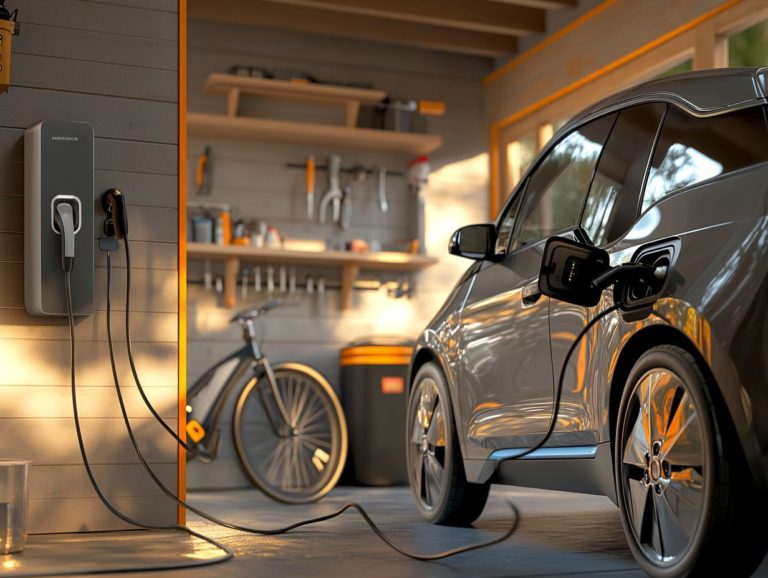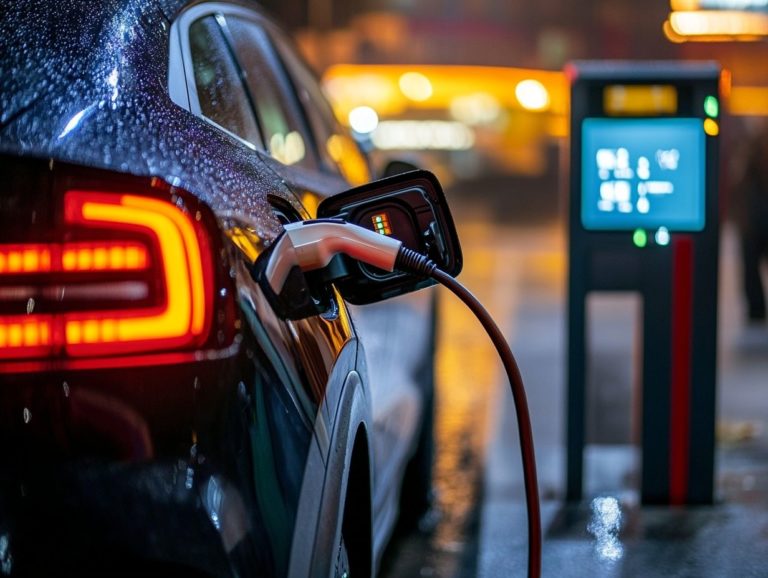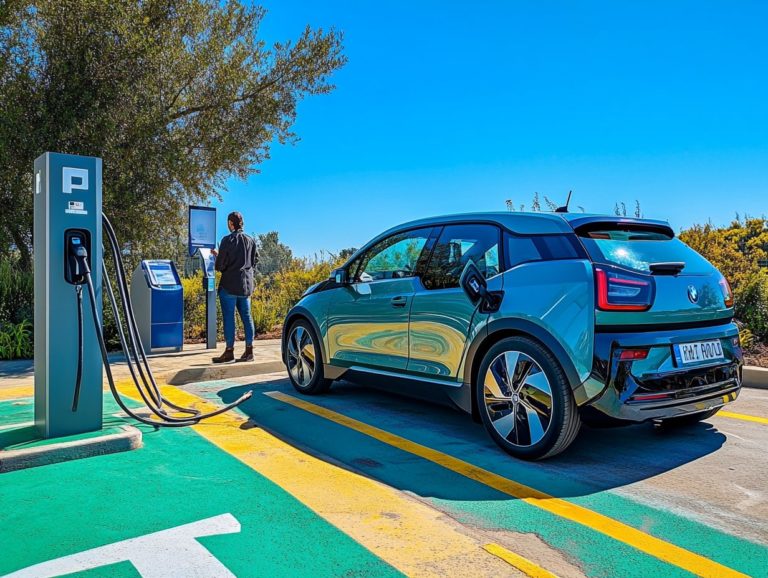What Are the Benefits of Public Charging Stations?
As electric vehicles (EVs) surge in popularity, public charging stations become essential in propelling this green revolution forward.
These stations not only provide convenience for EV owners but greatly help the community by diminishing carbon emissions and enhancing access to sustainable transportation options.
This article delves into the different types of charging stations, highlighting their numerous benefits and key considerations for users.
Whether you are an EV owner or merely intrigued by this expanding infrastructure, you ll find valuable insights awaiting your exploration.
Contents
- Key Takeaways:
- Benefits of Public Charging Stations
- Types of Public Charging Stations
- Considerations for Public Charging Stations
- Frequently Asked Questions
- Why Should You Care About Public Charging Stations?
- How do Public Charging Stations Benefit Electric Vehicle Owners?
- Are there Environmental Benefits to Public Charging Stations?
- Do Public Charging Stations Benefit Local Businesses?
- What are the Economic Benefits of Public Charging Stations?
- How do Public Charging Stations Benefit the Overall Electric Vehicle Market?
Key Takeaways:
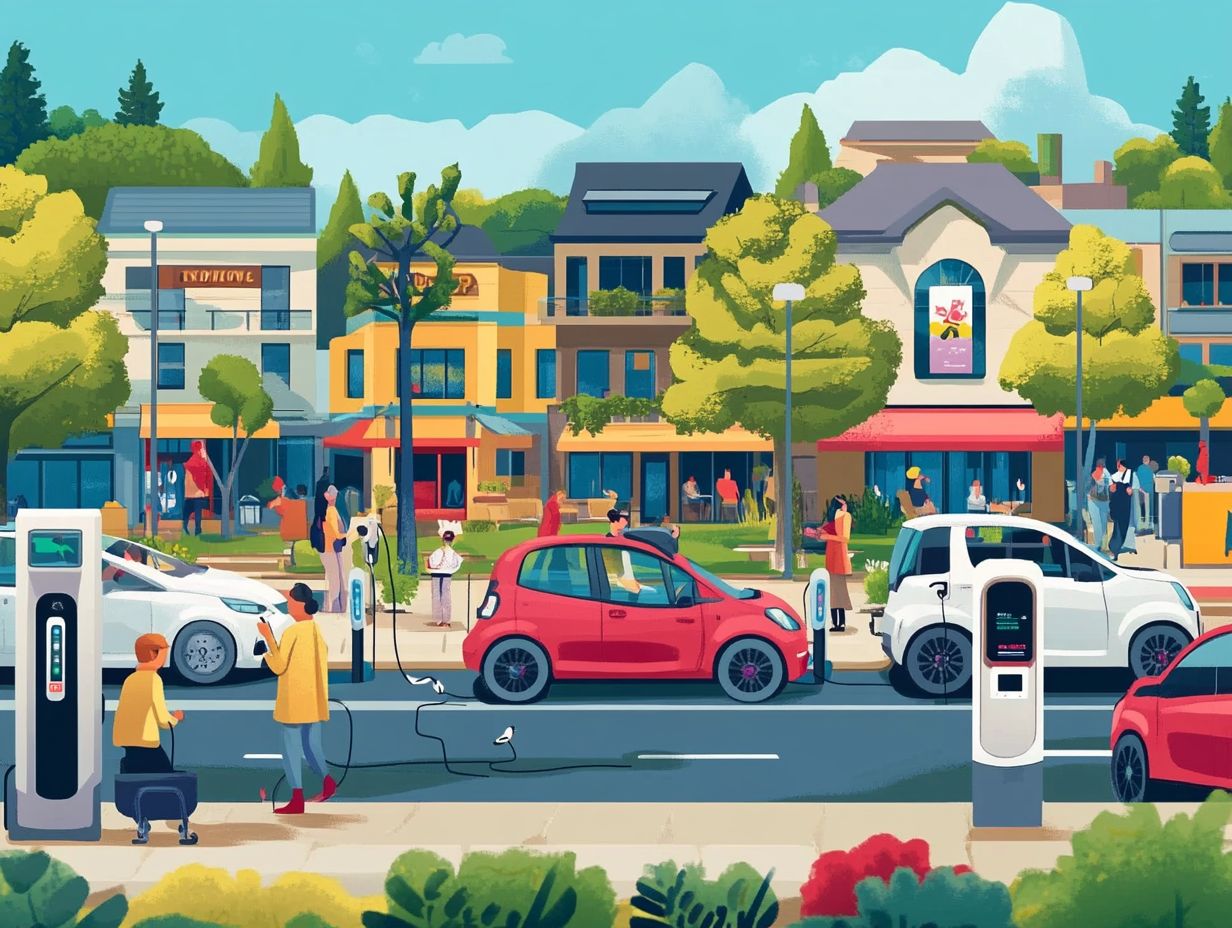
- Public charging stations provide convenient access to charging for electric vehicle owners, making it easier for them to charge their cars on the go.
- By promoting the use of electric vehicles, public charging stations help reduce carbon emissions and contribute to a cleaner and more sustainable environment.
- With the increasing availability of public charging stations, electric vehicles are becoming more accessible and viable options for transportation, leading to a decrease in reliance on fossil fuels.
What are Public Charging Stations?
Public charging stations are vital components of the infrastructure that support the widespread adoption of electric vehicles (EVs). They play a key role in the clean energy transition and in reducing transportation pollution.
These stations offer convenient access to charging for electric vehicle owners, whether they’re utilizing smart charging solutions (charging that optimizes energy use) or harnessing renewable energy sources.
By enhancing the EV charging network, these stations not only contribute to improved air quality but also bolster communities in their pursuit of economic benefits and infrastructure development.
The presence of public charging stations significantly boosts consumer confidence in EV technology. Drivers are far more inclined to embrace zero-emission vehicles when they know charging options are readily accessible.
These stations invigorate local economies by creating jobs related to installation, maintenance, and customer support, while also acting as hubs for innovation in clean technology.
By fostering collaboration among municipalities, businesses, and private investors to expand charging networks, these stations embody a collective commitment to sustainable living, contributing to the overarching goal of reducing greenhouse gas emissions.
Benefits of Public Charging Stations
Public charging stations present a wealth of advantages that transcend simple convenience for electric vehicle owners. They greatly help the community by enhancing air quality and providing economic benefits while championing the adoption of clean energy.
Offering charging options within local areas encourages higher EV adoption rates. Additionally, it paves the way for a reduction in greenhouse gas emissions, bolstering sustainable transportation initiatives.
Convenience for Electric Vehicle Owners
For electric vehicle owners like yourself, having access to both home charging and public charging stations is essential for a seamless driving experience. This access allows you to fully enjoy the benefits of your electric car while on the move.
Public charging stations perfectly complement your home charging setup, offering flexibility and ease in refueling, especially in urban areas where charging networks are rapidly expanding.
These public stations come in various types, differing in availability and charging speed to meet diverse needs and travel routes. As the charging infrastructure continues to evolve, it enhances the allure of electric vehicles and shapes consumer choices.
Fast charging options, in particular, are vital for long-distance journeys, alleviating range anxiety and inspiring spontaneous adventures. Ultimately, the smooth integration of home and public charging solutions cultivates a more robust charging ecosystem.
Reduced Carbon Emissions
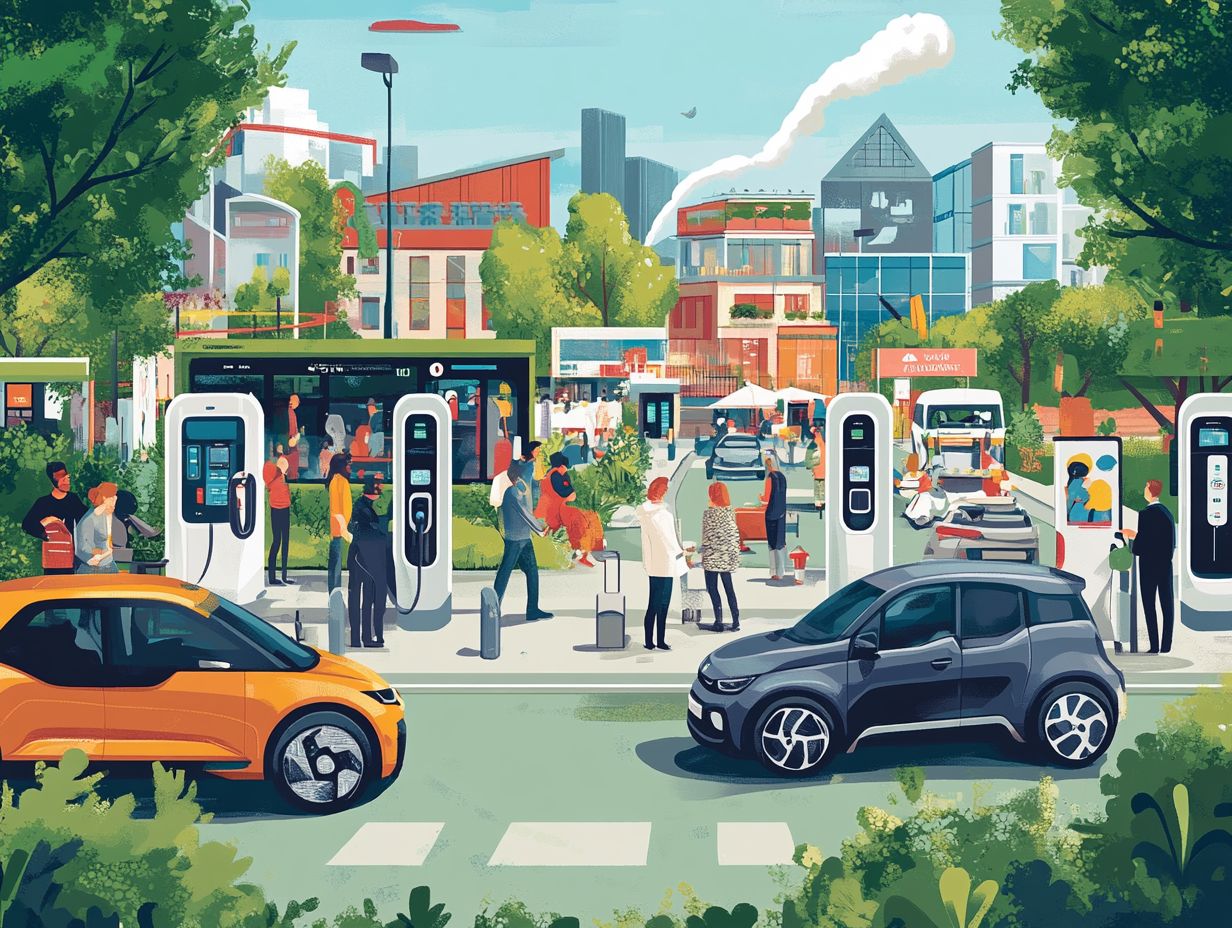
Public charging stations are vital for reducing carbon emissions. Promoting electric cars helps reduce pollution. You contribute to a cleaner air initiative supported by strong charging infrastructure.
With increased access to EV charging, transitioning to electric vehicles can significantly reduce transportation pollution and curb greenhouse gas emissions.
Research from esteemed organizations like the International Energy Agency shows that widespread charging infrastructure can boost EV adoption, leading to a decrease in urban air pollution. The American Lung Association highlights that better access to public charging stations lowers carbon emissions and offers substantial health benefits, especially in densely populated areas.
For instance, in cities that have expanded their EV charging networks, there has been a notable decline in respiratory illnesses linked to poor air quality. This illustrates the powerful link between innovative transportation solutions and improved public health outcomes.
Increased Accessibility to Electric Vehicles
Increased access to public charging stations is crucial for driving electric vehicle adoption. Expanding charging networks in your community enhances public health by minimizing vehicle emissions and supporting a broader range of mobility solutions.
As cities focus on installing charging stations in strategic hotspots like shopping centers and busy urban areas, they make EVs more attractive to potential drivers. This creates a ripple effect that influences urban planning.
Take California, for example. The successful development of charging networks there has been closely tied to rising EV sales. This highlights the impactful role of government incentives and partnerships. As more individuals embrace electric vehicles, the reduction in harmful air pollutants leads to improved public health outcomes, alleviating respiratory issues and fostering a cleaner environment for generations to come.
Types of Public Charging Stations
Public charging stations come in various types, classified by their charging levels: Level 1, Level 2, and Level 3. Each type offers unique benefits and charging speeds tailored to meet the specific needs of different electric vehicles.
Understanding these distinctions is crucial for enhancing your EV charging experience and fostering infrastructure development that supports a wide array of electric vehicles.
Level 1, 2, and 3 Charging
Level 1 charging is the slowest type, usually used at home. Level 2 and Level 3 are faster options for public use. Level 1 charging is perfect for overnight sessions, while Level 3 provides rapid refueling essential for fleet management and long-distance travel.
Level 2 charging strikes a balance, often found in public spaces like shopping centers and workplaces. This enables you to quickly top up during errands or work shifts. For electric vehicle owners, varying charging speeds impact daily routines and travel plans, influencing infrastructure development strategies.
The allure of faster charging options can motivate more consumers to switch to electric vehicles, especially when paired with enticing government incentives like tax credits or rebates. Therefore, understanding these charging levels empowers you to make informed decisions and shapes the national demand for charging stations.
Considerations for Public Charging Stations
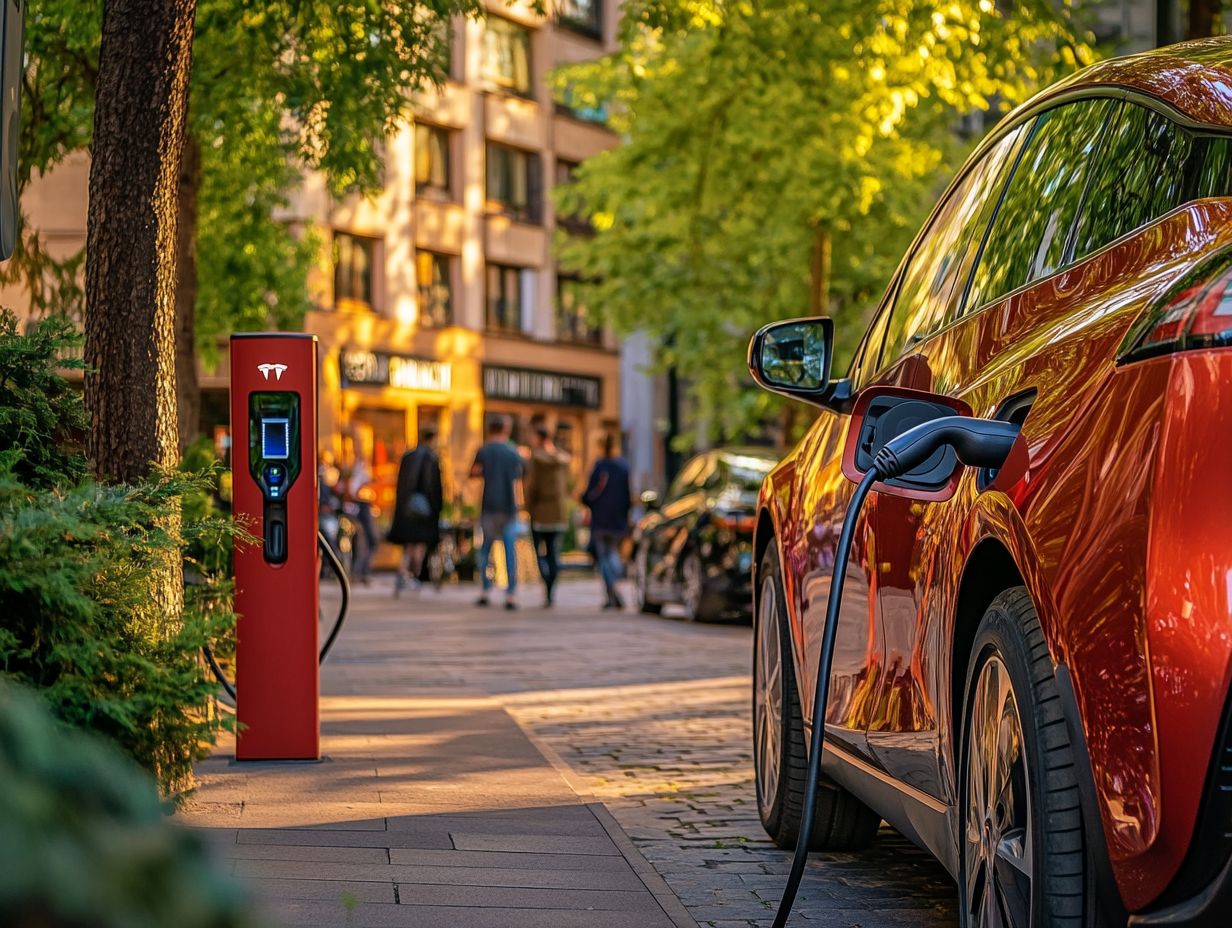
When you re planning public charging stations, it s essential to carefully consider their location, availability, cost, and payment options. These factors greatly influence the effectiveness of electric vehicle infrastructure.
Understanding the costs and payment methods ensures that electric vehicle owners have broad access, making the transition to electric mobility smoother and more appealing.
Location and Availability
The location and availability of public charging stations are key factors that affect the convenience and effectiveness of electric vehicle adoption in any given area. Placing charging stations in cities and along major roads makes them easier to access, encouraging more drivers to embrace electric vehicles.
Local jurisdictions play a crucial role in this planning process. Their local laws and policies can either facilitate or obstruct the expansion of charging infrastructure. Areas with forward-thinking policies often experience a notable increase in usage rates, fostering a supportive ecosystem for electric vehicles.
When potential electric vehicle owners observe a wealth of charging options, they are much more likely to consider making the transition. This leads to long-term behavioral changes that prioritize sustainability.
This interconnected relationship between the availability of charging stations and consumer mindset underscores the importance of comprehensive planning in shaping a greener transportation future.
Cost and Payment Options
Cost and payment options for public charging stations are crucial factors that influence decisions and the overall adoption of electric vehicles. Transparent pricing and a variety of payment methods can significantly enhance the appeal of using public charging stations compared to traditional refueling methods.
As you join the growing number of consumers transitioning to electric vehicles, grasping the intricacies of pricing models becomes essential. Different approaches, such as pay-per-use and subscription models, cater to preferences and can encourage more frequent use.
Providing flexible payment options like mobile apps and contactless systems boosts convenience and enhances the overall experience. Government incentives, such as tax credits or rebates, are key in easing upfront costs, promoting widespread adoption.
Explore your local charging options today and join the electric vehicle revolution!
Frequently Asked Questions
Why Should You Care About Public Charging Stations?
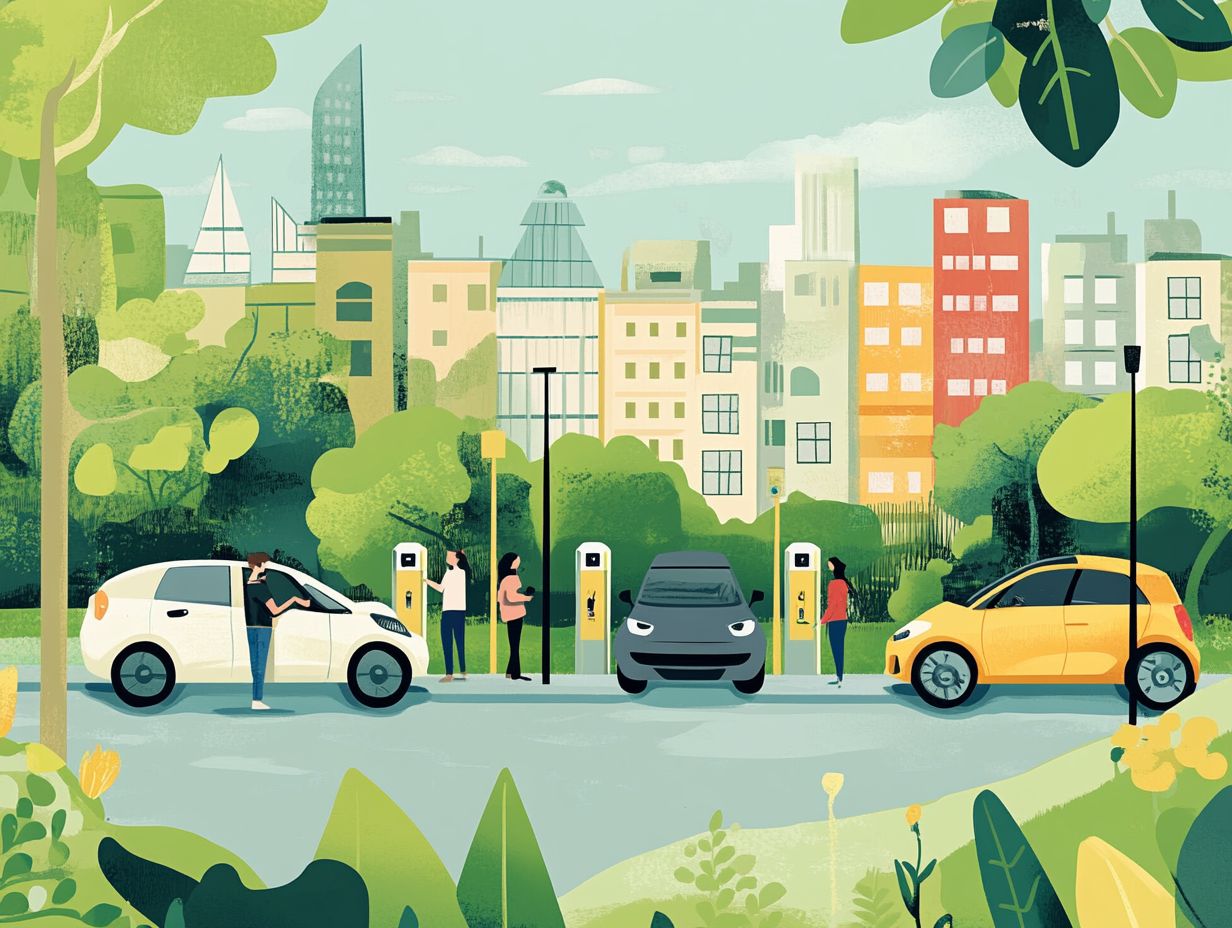
There are several benefits to having public charging stations available for electric vehicles. Here are some of the main advantages:
How do Public Charging Stations Benefit Electric Vehicle Owners?
Public charging stations allow electric vehicle owners to easily and conveniently charge their vehicles while on the go. This eliminates the need to search for a private charging station or worry about running out of battery while driving.
Are there Environmental Benefits to Public Charging Stations?
Yes! Public charging stations contribute to a cleaner environment by reducing the use of fossil fuels and emissions from gasoline and diesel vehicles. This helps to improve air quality and combat climate change.
Do Public Charging Stations Benefit Local Businesses?
Absolutely! Public charging stations can attract electric vehicle owners to local businesses, increasing foot traffic and potential customers. This can also improve the image of a business as environmentally conscious and progressive.
What are the Economic Benefits of Public Charging Stations?
Public charging stations boost the economy by creating jobs in renewable energy and electric vehicle industries. This means more jobs for our communities and more green energy solutions!
How do Public Charging Stations Benefit the Overall Electric Vehicle Market?
Public charging stations create a network that makes charging convenient and accessible. This boosts consumer confidence in buying electric vehicles and promotes market growth, reducing reliance on gasoline cars. Together, we are paving the way for a cleaner, greener future!

